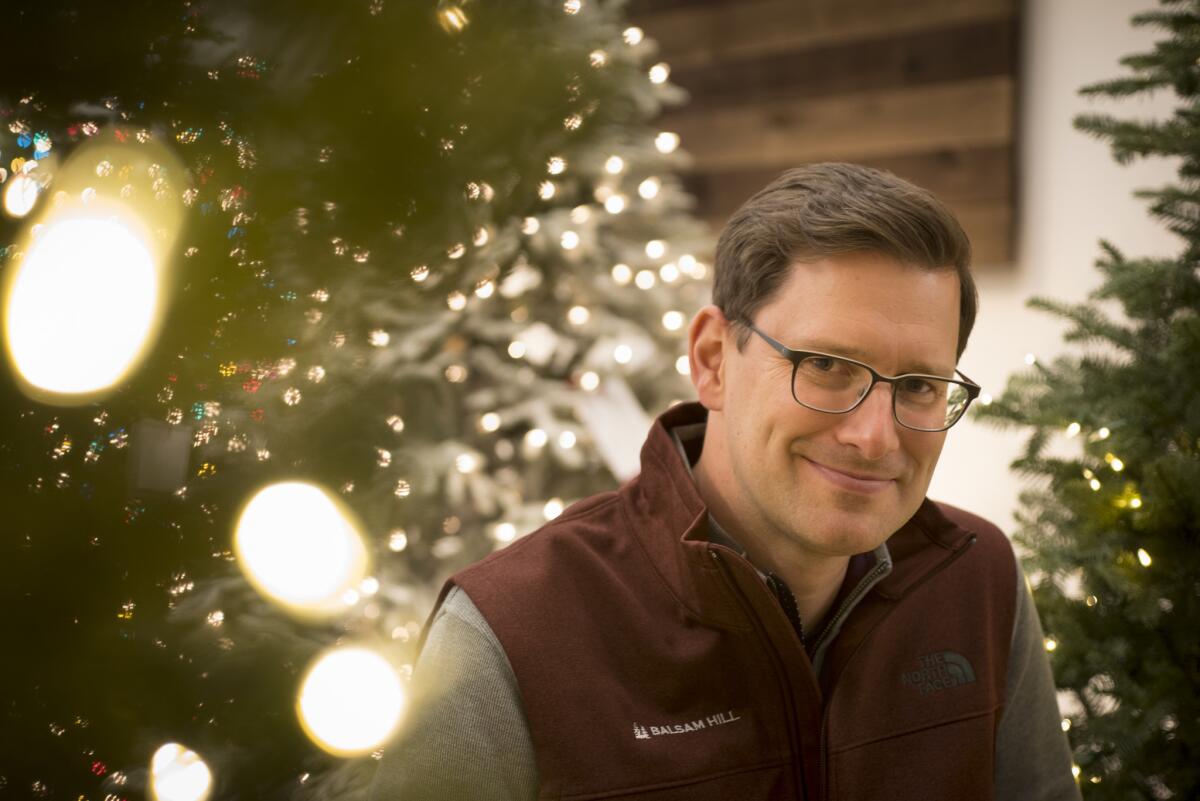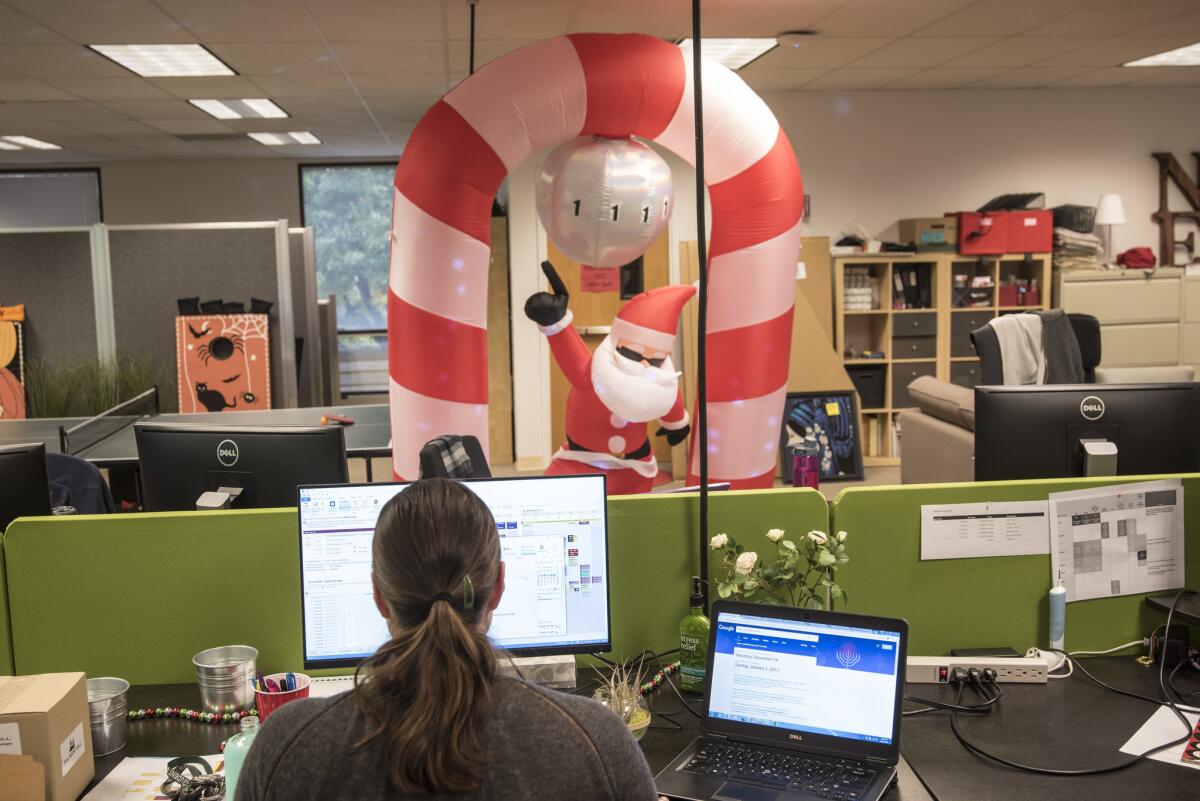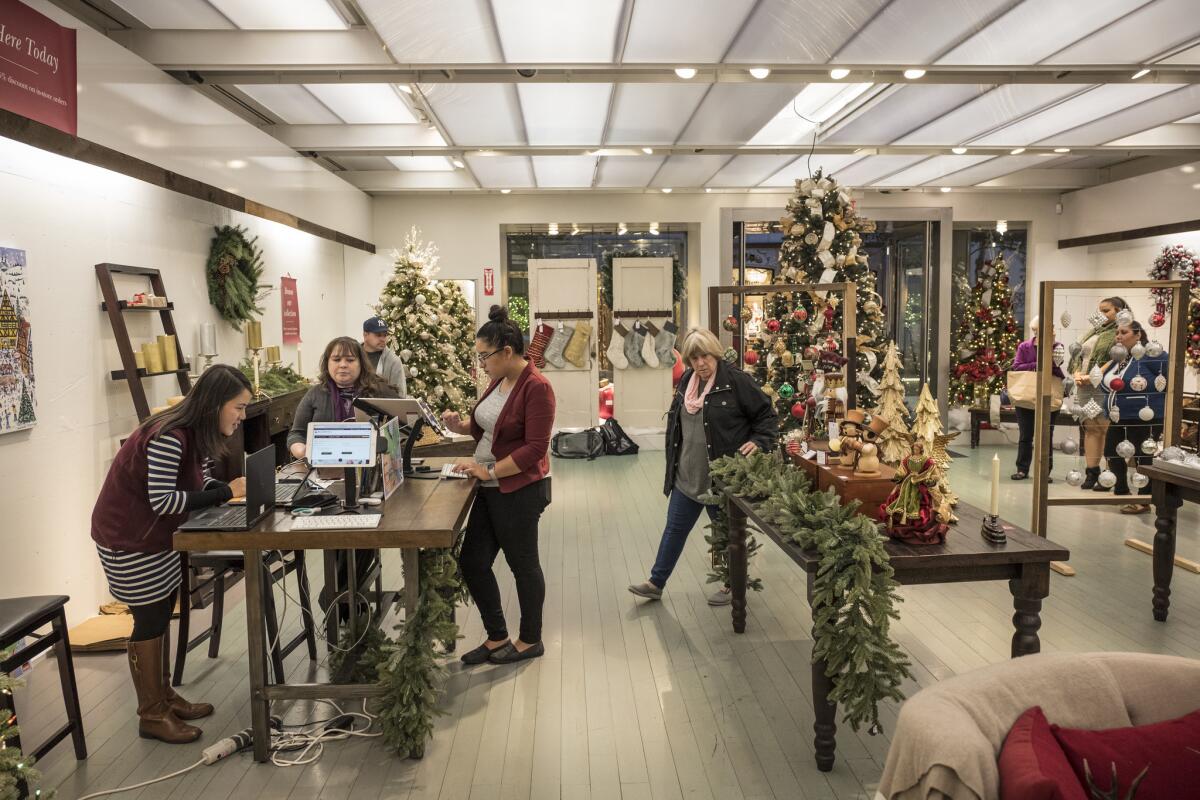This artificial Christmas tree company has Silicon Valley written all over it

Downtown Redwood City is home to cloud-storage company Box, virtual reality start-up AltspaceVR, music identification app Shazam and artificial Christmas tree-maker Balsam Hill.
One of these things is not like the others.
“It’s definitely weird for us to be here,” said Thomas Harman, the 40-year-old founder and chief executive of the holiday decoration company.
But rather than feel like his company doesn’t belong in a neighborhood known for its software businesses and venture capital firms, Harman has embraced his 11-year-old company’s tech hub home. He describes his business as having one foot planted in the slow-moving seasonal decorations world (where products are planned 18 months in advance) and another in Silicon Valley (where thinking-outside-the-box is often thought to be the only way to think).
“If you compare us to people doing artificial intelligence and machine learning, or Google and Facebook, we’re obviously not doing anything earth-shattering like that,” Harman said. “But we like to think we’re pushing the envelope when it comes to holiday decorations.”

Before Balsam Hill came along, for example, no one focused on making the whole tree look real, Harman said. “People focused on making the needles look real, but no one thought of structure, color and the way it all came together.”
In 2006, Harman saw an opportunity. His family had always gotten real trees, but his brother-in-law was allergic to them. Lots of people had reason to seek out artificial trees, and those customers, he thought, didn’t necessarily want something that looked fake and plastic.
A geology major in college, Harman had the chops to design a good-looking tree (he still designs some of the company’s trees today). Having helped run his family’s manufacturing business in Cleveland, he also knew a thing or two about getting stuff made. And having recently gotten an MBA from Stanford, he felt confident about building an e-commerce platform that looked better than what other fake tree-makers were cobbling together.
“I actually tried to start the business in my garage — like the HP story — but I couldn’t get the Wi-Fi to work in there,” he said.
So he compromised, starting it in the guest bedroom of his Palo Alto apartment on Sand Hill Road, a short walk from where some of the country’s biggest venture capital firms were at the time investing in then-newbie start-ups such as Facebook, Twitter and YouTube.
Being in the heart of Silicon Valley, Harman couldn’t help but feel buoyed by the surrounding energy.
“You walk into a coffee shop here, and it’s full of entrepreneurs,” he said. “In Cleveland, where I’m from, if you say you started a business and it failed, you’re looked at like a total loser. In Silicon Valley, they think, ‘Great, you’re not going to make that mistake again.’ ”
And so Balsam Hill took risks. Where major artificial Christmas tree sellers such Wal-Mart and Target played it safe with uniformly green trees, Balsam Hill shook things up, offering different species of fake trees, even going full-artificial with a lily-white tree.
For the Australian market, the company released an upside-down tree where the ornaments dangled like ripened fruit (the tree was a flop — apparently Aussies didn’t appreciate “Down Under” jokes as much as Americans thought they would).
“But at least we were willing to try things,” Harman said.

Aside from taking risks, the Valley imparted other lessons on Harman.
He has become an angel investor, funding firms such as e-commerce start-up Man Crates, online dating site OKCupid, and parking app SpotHero. Seeing the way companies like Man Crates and OKCupid built customer loyalty, he diversified Balsam Hill’s business. In addition to artificial trees, which shoppers might buy only once, Balsam Hill now also sells home décor for holidays year-round. It may have started as a Christmas tree company, but he sees it more as a one-stop holiday e-commerce shop.
For all the Silicon Valley inspiration, though, Balsam Hill’s headquarters still looks more like Santa’s workshop than a fast-paced start-up. Lush holiday wreathes of different sizes adorn the walls. The reception desk is always surrounded by at least a dozen fake fir trees — some a vibrant green, others painted with a light dusting of fake snow and some appearing to be burnt by sunshine. An inflatable Santa Claus — lit with disco lights — arrived in November, but he wouldn’t have looked out of place had he popped up six months earlier.
The company has patents on its Christmas trees and is now introducing more tech into its holiday decorations. Harman met a software engineer at his local church who helped Balsam Hill design Christmas lights that are responsive to music. Another friend who works on encryption tech and owns a 3-D printer is helping Balsam Hill develop decorations in his spare time.
The company is on track to bring in approximately $100 million in revenue this year. It now employs more than 125 employees and has offices in California, Idaho, Ireland and the Philippines. It’s one of the biggest makers in the world of high-end artificial Christmas trees (its trees range from the low hundreds to more than $10,000), and Harman is now a regular guest on morning news shows whenever they need a Christmas tree expert.
Working with tangible products, the company has tight margins, Harman said, but “the way we survive is we have a culture that attracts people who live in the area and who want to do things differently.”
Different like Balsam Hill’s take on the Christmas tree skirt — the cloth that sits at the base of a tree to cover the stand.
“This year it’s all about tree collars,” he said. Instead of a skirt, they’re sticking the tree into a miniature wooden barrel.
Twitter: @traceylien







